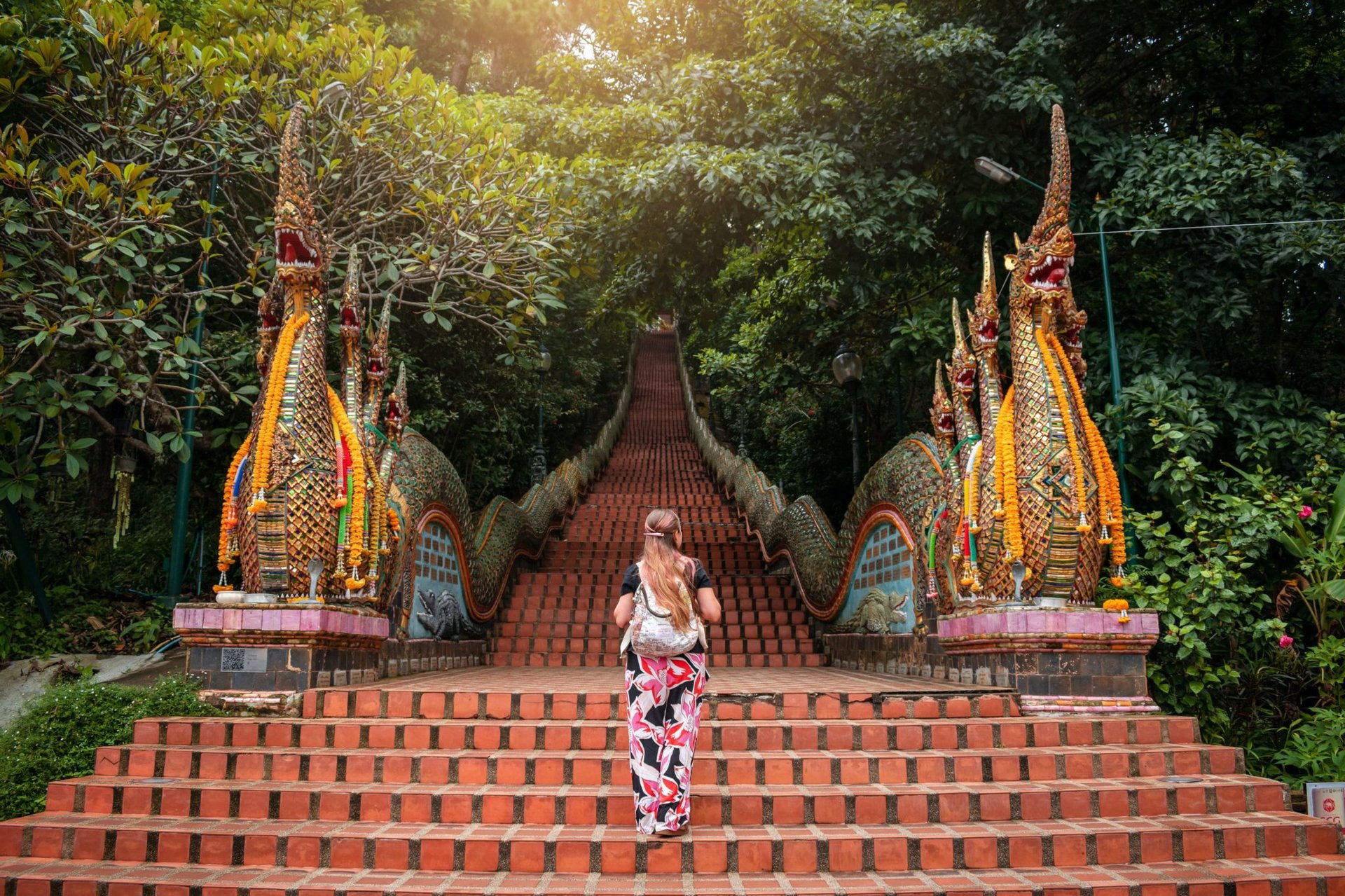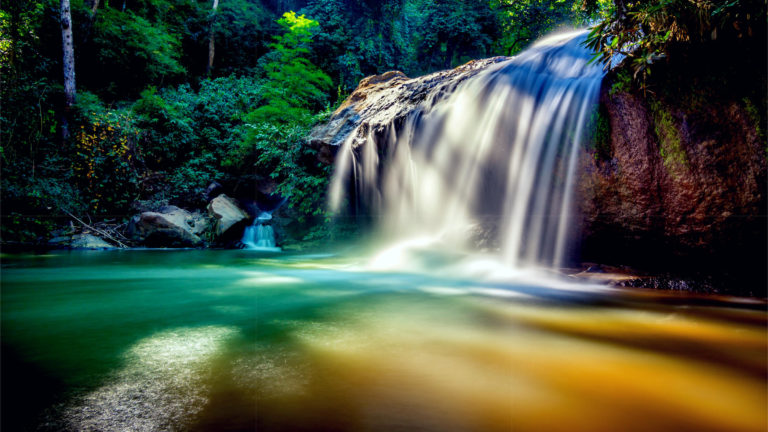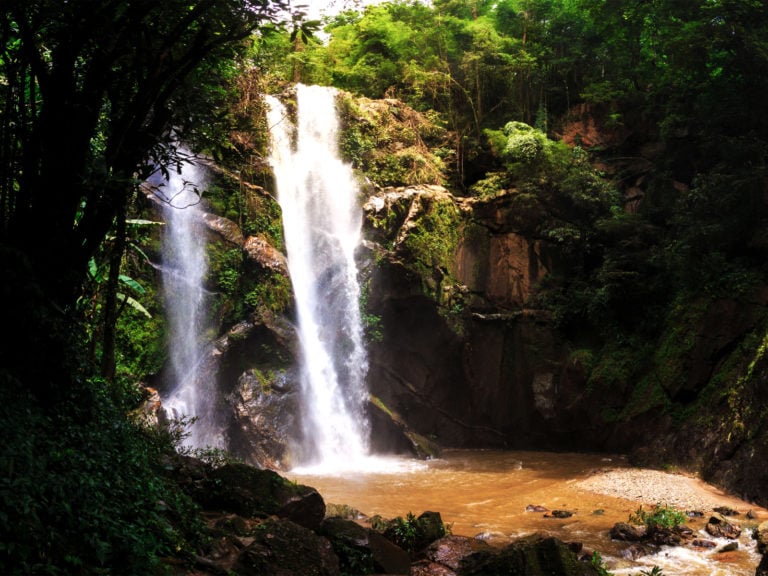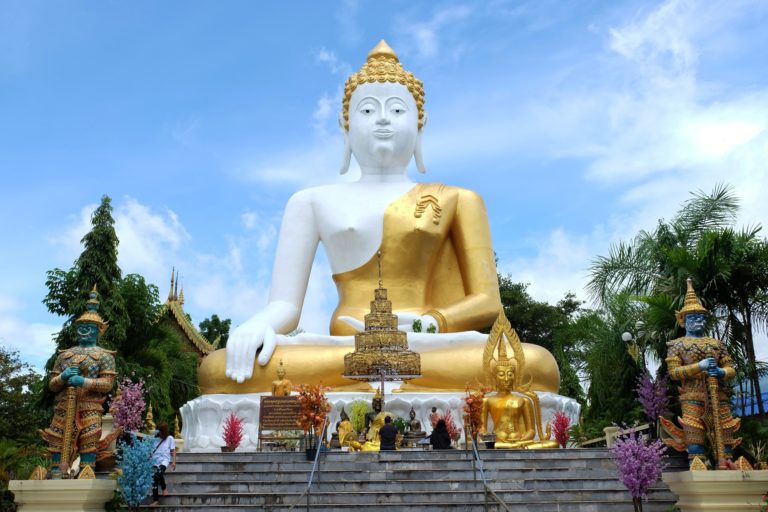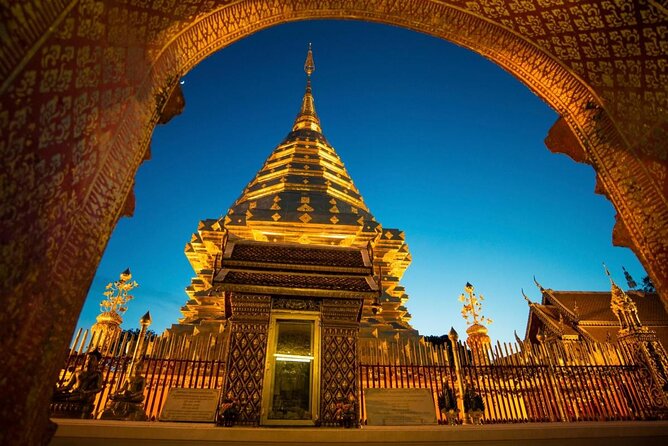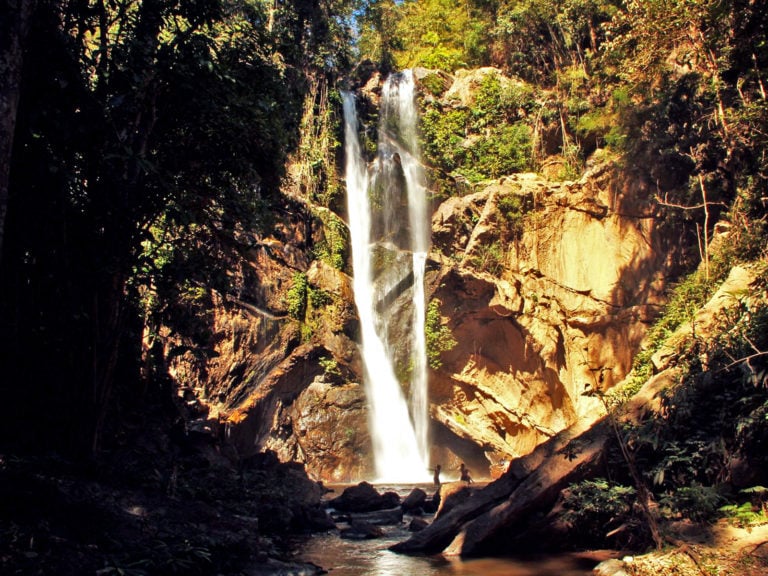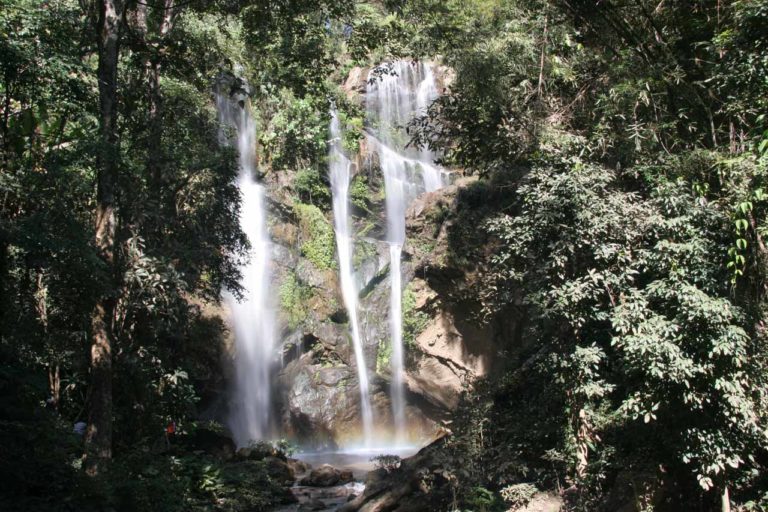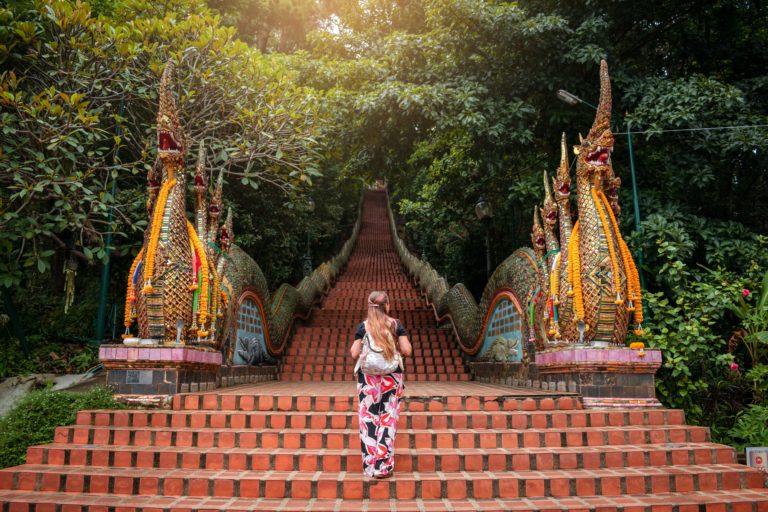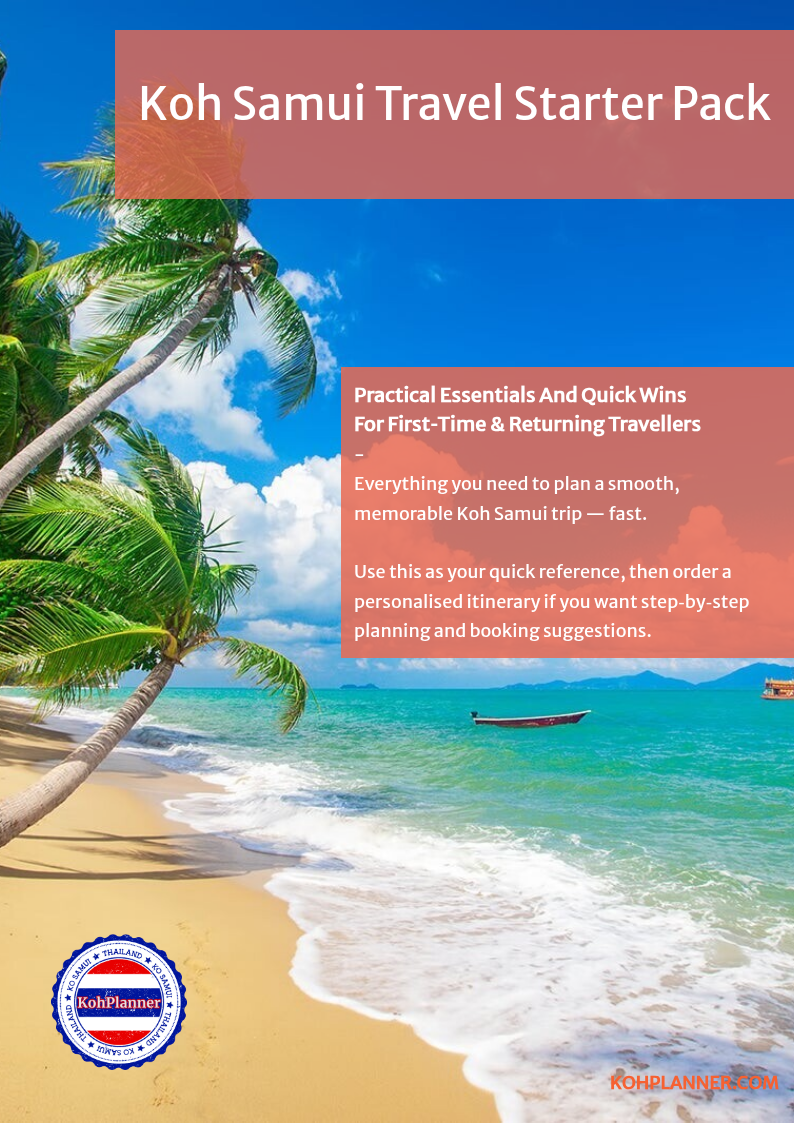Doi Suthep-Pui National Park
Doi Suthep-Pui National Park, nestled in the lush mountains of northern Thailand, is a spectacular destination that captivates both locals and tourists alike. Home to an abundance of natural beauty, cultural landmarks, and exciting activities, the park offers a perfect getaway for anyone seeking a break from the bustling city life of Chiang Mai.
Established in 1981, Doi Suthep-Pui National Park covers an area of 261 square kilometers, encompassing parts of Chiang Mai City and its surrounding districts. The park derives its name from two prominent peaks: Doi Suthep, standing at 1,676 meters, and Doi Pui, rising to 1,685 meters. The area is significant not only for its breathtaking natural wonders but also for its rich cultural and historical heritage.
Flora and Fauna
The lush forests of the park are primarily made up of mixed deciduous and evergreen trees, providing a thriving habitat for a variety of plant and animal species. Some of the most notable flora include ferns, mosses, and orchids, as well as unique local species like the Bua Tong, or Mexican sunflower, which blooms with vibrant yellow flowers between November and December.
As for fauna, the park is home to over 300 species of birds, making it a paradise for birdwatchers. Some of the most common species include the white-rumped shama, barbets, and leafbirds. Mammals such as macaques, gibbons, and wild boar can also be spotted throughout the park. Moreover, it’s not uncommon to come across reptiles like the giant flying squirrel or the Asian forest tortoise.
How to Get There
Doi Suthep-Pui National Park is easily accessible from Chiang Mai, located just 15 kilometers away. The most popular way to reach the park is by renting a scooter or motorcycle, which allows you to explore at your own pace. Alternatively, you can hire a songthaew, a red truck taxi, to take you to the park and other nearby attractions.
Where to Stay and Eat
Accommodation options within the park are limited, but there are a few lodges and guesthouses available for those who wish to stay overnight. The Mon Tha Than Waterfall Bungalows, Pongyang Jungle Coaster, and Zipline Camp, and Doi Pui Hmong Village Homestay are some of the options that provide basic amenities and an authentic experience.
For dining, the park offers a few local eateries and cafes, mostly concentrated around the main attractions. The Hmong Village of Doi Pui and the area around Wat Phra That Doi Suthep Temple both offer local cuisine at affordable prices.
Visit Wat Phra That Doi Suthep: This stunning temple is one of the most revered Buddhist sites in Thailand. Founded in the 14th century, the temple features a gilded chedi (stupa) and an impressive collection of Buddhist statues and relics. The temple's terrace offers panoramic views of Chiang Mai and the surrounding countryside.
Explore the Hmong Village of Doi Pui: This small village offers a glimpse into the traditional lifestyle of the Hmong hill tribe people. Here, you can wander through the village, visit the small museum, and shop for local handicrafts like embroidered clothing and silver jewelry.
Hike to Waterfalls: Doi Suthep-Pui National Park is home to several stunning waterfalls, including Mon Tha Than, Huay Kaew, and Mae Sa. The trails leading to these waterfalls vary in difficulty, offering options for both casual walkers and experienced hikers. The waterfalls are especially refreshing during the hot season, making them popular spots for a cool dip.
Trekking and Nature Walks: The park boasts numerous trails that allow visitors to immerse themselves in its pristine natural beauty. Some popular trails include the Kew Mae Pan Nature Trail, which features stunning viewpoints and vibrant rhododendron forests, and the Ang Ka Nature Trail, a short walk through a high-altitude cloud forest.
Mountain Biking: For adventure seekers, mountain biking is an exhilarating way to explore the park's network of dirt roads and single-track trails. Bike rentals and guided tours are available in Chiang Mai and can be tailored to various skill levels.
Birdwatching: As mentioned earlier, the park is home to more than 300 bird species, making it a haven for bird enthusiasts. Early mornings and late afternoons are the best times to spot these winged wonders, so don't forget to bring your binoculars and a field guide.
Dress modestly when visiting temples, as this is a sign of respect. Make sure to cover your shoulders and knees.
Be prepared for cooler temperatures, especially during the cool season (November to February) and at higher elevations. Bring layers of clothing, including a light jacket or sweater.
Stay on designated trails to minimize your impact on the environment and avoid getting lost.
Carry plenty of water, snacks, and sunscreen, especially when embarking on longer hikes or outdoor activities.
Be respectful of local customs and traditions, especially when interacting with hill tribe communities. It's essential to ask permission before taking photos of people or their homes.
Doi Suthep-Pui National Park caters to a wide range of visitors, from nature lovers and adventure seekers to history buffs and spiritual travelers. Families, solo travelers, and groups alike can find something to enjoy in this diverse and captivating park. Its accessibility from Chiang Mai makes it a convenient destination for a day trip or an extended stay, allowing visitors to experience the best of Thailand's natural and cultural wonders.
In summary, Doi Suthep-Pui National Park offers a unique blend of history, culture, and nature that draws visitors from all walks of life. Whether you're marveling at the ornate Wat Phra That Doi Suthep, trekking through the lush forests, or simply soaking in the tranquility of the mountains, a visit to this remarkable park is bound to leave you with lasting memories and a deeper appreciation for the beauty of northern Thailand.
Sorry, no records were found. Please adjust your search criteria and try again.
Sorry, unable to load the Maps API.

